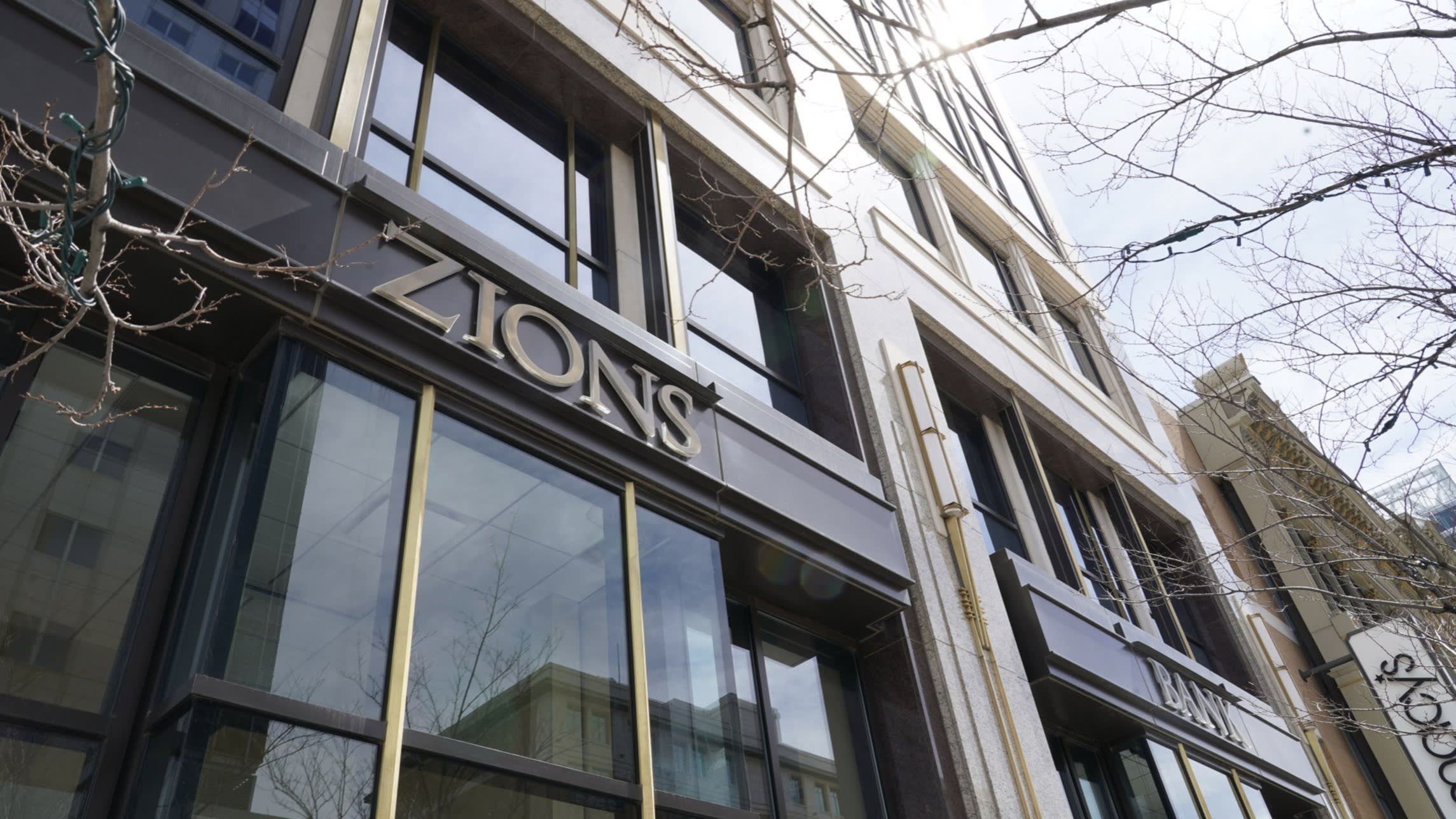Regional banks across the US have largely stemmed the massive outflow of deposits that threatened their stability following the collapse of a Silicon Valley bank, but their profit margins are shrinking unexpectedly fast.
More than a dozen mid-sized US banks reported earnings this week, warning of turmoil after the collapse of SVB, heightened competition for deposits, prompting them to hike rates paid to savers and lower their expected earnings. were forced to reduce.
Providence-based Citizens Financial Group, the nation’s 15th-largest bank by assets, told investors that lending would grow its earnings by about half the rate it would have to pay savers more for their deposits.
“We’re still going to grow, but not as much as we thought at the beginning of the year,” Bruce van Saun, Citizens’ chief executive, told the Financial Times.
The regional bank, formed in 2019 through the merger of Trist, BB&T and SunTrust, also cut its revenue growth target for 2023, “driven almost entirely by a lower net interest income outlook given higher deposit and funding costs.” “, Chief Financial Officer Mike Maguire told analysts. Cincinnati-based Fifth Third and Salt Lake City-based Zion also scaled down their outlook for profit lending for the rest of the year.
All told, the picture is very different from what bank executives and analysts had predicted a year ago. At the time, most expected that the increase in interest rates from historically low levels would result in bumper profits for lenders as they could charge more for loans without raising rates on deposits.
Instead, fears of the Federal Reserve’s rapid rate hikes, persistent inflation and more recently the collapse of the SVB have prompted customers to move money between banks and money market funds in search of better rates.
In a sharp reversal in the week ended April 19, nearly $69 billion flowed out of US money market funds, but the shift in deposits has tested the viability of the old-school business model of regional lenders, which go long on cheap deposits for funds. depend on. Loans to specific customers.
“People are starting to digest what everything means. It’s going to be slower growth, less revenue,” said Chris McGratty, head of US bank research at KBW.
Some banks have performed better than expected: Western Alliance shares jumped 20 percent on Wednesday after the Phoenix-based bank’s CEO said it had $3 billion in deposit inflows over the past few weeks , which was partially offsetting the outflow earlier in the year.
But there is likely to be more immediate pain ahead for some regional lenders. In the first quarter of this year, customers deposited nearly $600 billion from all US banks, according to Fed data. The country’s four largest lenders — JPMorgan Chase, Bank of America, Wells Fargo and Citigroup — hold about 45 percent of all bank deposits in the US, but represent less than 10 percent of outflows.
Indeed, some of the smaller lenders have fared worse than their larger rivals. Shares of Eagle Bank, an $11 billion lender based in Bethesda, Maryland, plunged 20 percent on Thursday after it reported a $1.3 billion, or 14 percent, drop in deposits in the first quarter. Dallas-based Comerica reported a 9 percent decline in deposits on Thursday to $64.7 billion.
First Republic and PacWest Bank, the two lenders seen as most at risk from deposit flight, will not report their results until next week.
Still, reported results suggest that regional lenders have been able to hold on to their customers’ cash, in general, by raising the rates they pay to depositors.
Deposits at Fifth Third, Huntington and KeyBank, mid-sized lenders that each have about $200 billion in assets, fell less than 3 percent in the third quarter. But their deposit costs have risen as customers have moved money out of non-interest-bearing accounts and into certificates of deposit, which carry higher interest rates and have a set term.
recommended

“The net interest margin of these banks will go down; It’s just a question of how fast it will happen,” said Alexander Yocum, an analyst at CFRA Research who follows regional banks.
At KeyBank, for example, the cost of deposits rose to $350 million in the first quarter of the year, up 2,400 percent from the $14 million it paid in interest to depositors in the same period a year earlier. CDs and other fixed deposits now account for 60 per cent of the bank’s deposits.
Industry experts say the regional banking system has performed better than expected. “My personal opinion is that most of these banks are weathered,” said Ron O’Hanley, CEO of giant custody bank State Street. “Will there be challenges in some banks? Yes, but for most of them it is an earnings challenge and not a solvency challenge.”
Additional reporting by Harriet Clerfelt in New York




